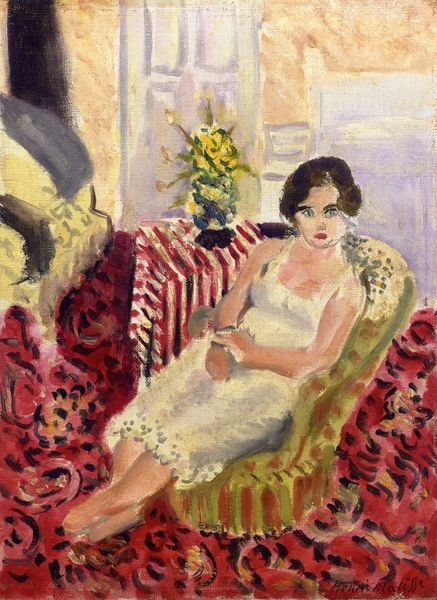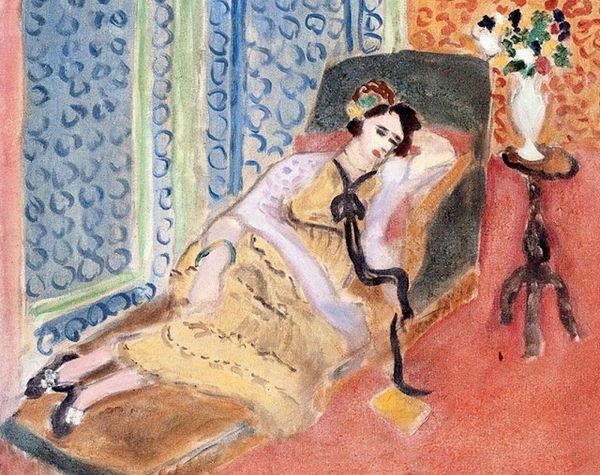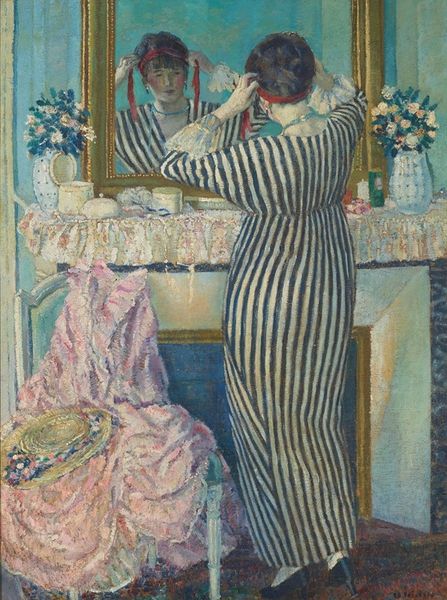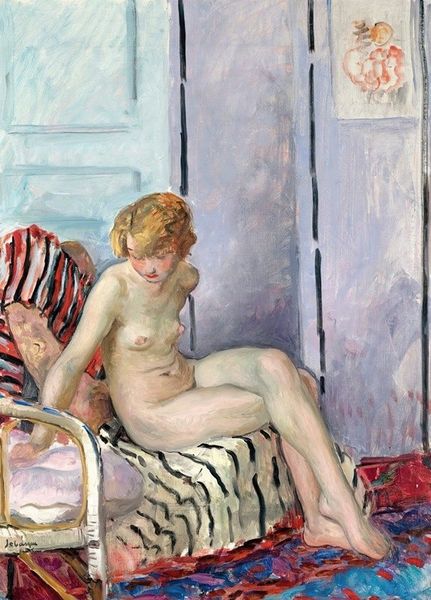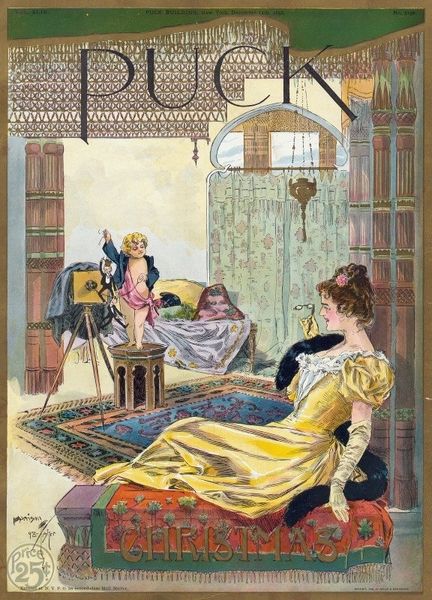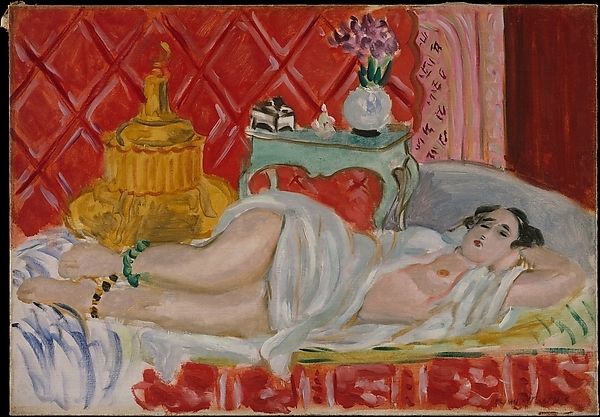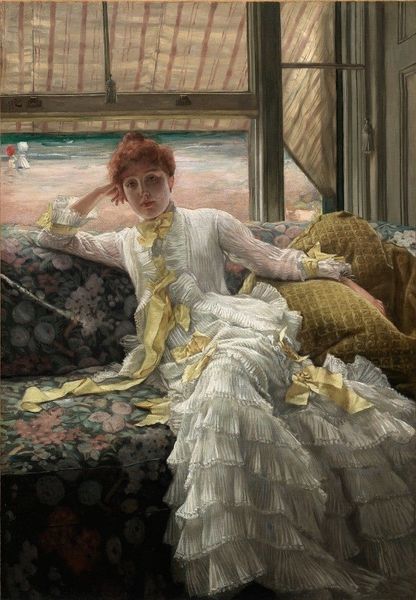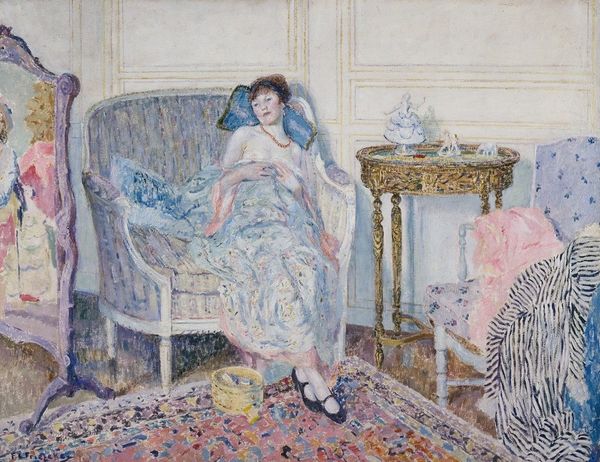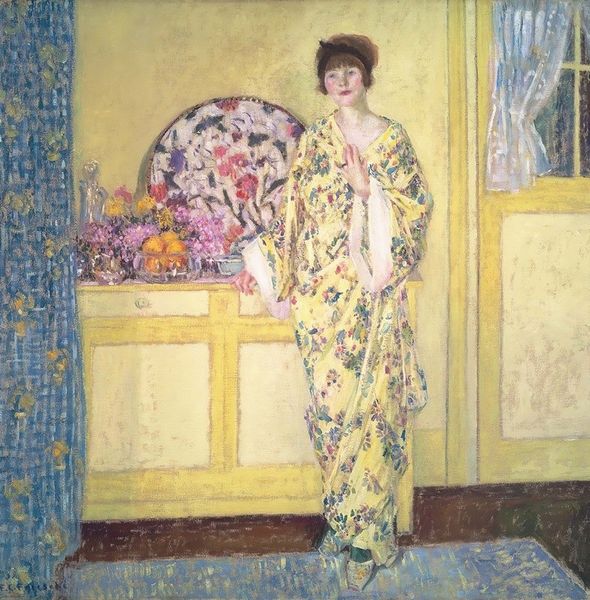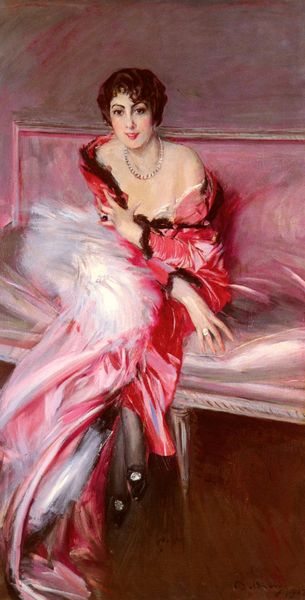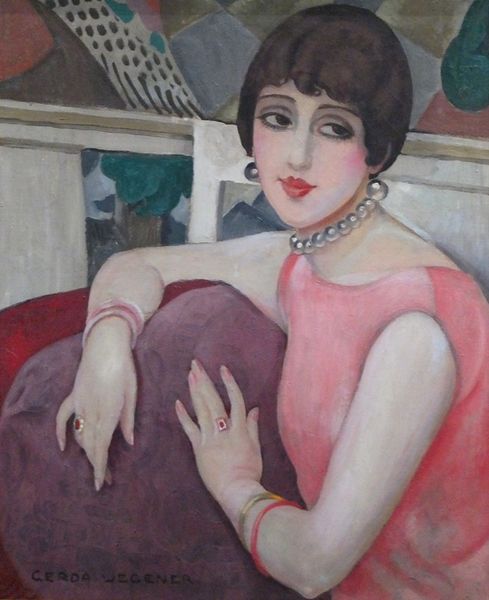
Copyright: Public Domain: Artvee
Editor: So, here we have Édouard Vuillard’s oil on canvas, “Jane Renouardt”, from between 1926 and 1927. It's a very busy scene, a portrait amidst layers of dressing room reflections. I'm immediately struck by how the painting seems to celebrate feminine spaces. What do you see when you look at it? Curator: I see a careful construction of femininity within the public sphere. Vuillard, deeply embedded within the Parisian cultural scene, offers us a glimpse into the performative aspects of constructing identity. Think about the subject, Jane Renouardt; she was a prominent actress. How does the setting – this private space made public – reinforce or challenge societal expectations of women at that time? Editor: That's interesting. I hadn't really thought about the tension between the private dressing room and the public persona of the actress. The reflections almost create multiple versions of her. Curator: Exactly. Consider the context: it’s the interwar period, a time of significant social change, especially for women. Vuillard places Renouardt in this almost labyrinthine space. It brings a tension between traditional representations and the evolving roles of women in the 1920s. Does the painting feel celebratory, or perhaps a bit…constrained? Editor: Maybe a bit of both? There’s definitely a sense of luxury, but the multiple reflections and enclosed space could also hint at pressure and expectation. Curator: Precisely! The dressing room becomes a stage, not just for Renouardt but for Vuillard to comment on the societal forces shaping women's roles and self-presentation during that era. It's less about capturing her likeness and more about the machinery of celebrity. Editor: This makes me see the painting in a completely different light! It’s much more than just a pretty portrait. Thanks for sharing your insight. Curator: My pleasure! It’s these layers of meaning, woven into seemingly simple portraits, that makes art history so compelling.
Comments
No comments
Be the first to comment and join the conversation on the ultimate creative platform.
